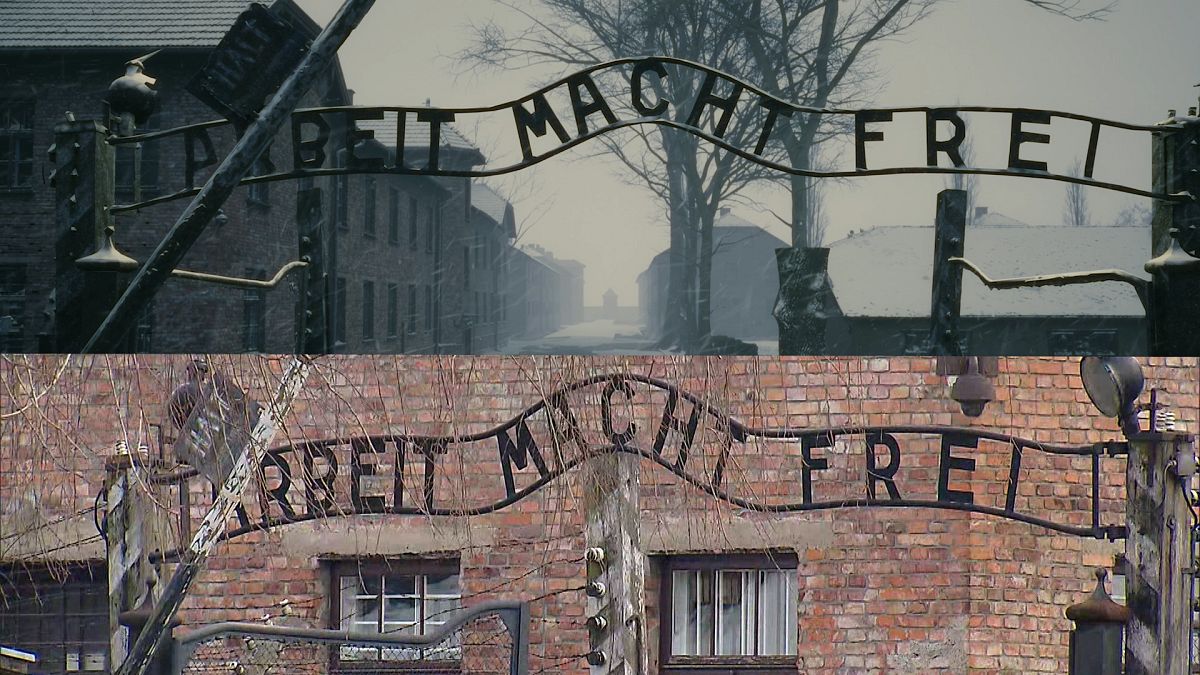Due to conservation protection, shooting films at the Auschwitz site is not possible.
In order to meet the needs of filmmakers, the Auschwitz Museum has made a digital replica, which was created “out of the growing interest of directors in the history of the German camp,” explains Bartosz Bartyzel, a spokesman for the museum, in an interview with Euronews Culture.
Euronews Culture: Where did the idea to create a digital replica of Auschwitz come from?
Bartosz Bartyzel: The Auschwitz Museum has been working with filmmakers for many years – both documentary filmmakers and feature film directors. However, due to the conservation protection of the authentic Memorial Site, it is not possible to shoot feature films at the site. The idea to create a digital replica was born out of the need to respond to the growing interest in the history of the Auschwitz German camp in cinema and the daily experience of dealing with the film industry. This tool offers an opportunity to develop this cooperation in a new, responsible and ethical formula.
Why is a replica necessary?
B.B.: The regulations in force at the Memorial preclude the possibility of shooting feature films on the authentic and protected site of the former camp. However, filmmakers – especially those who want to reach for more narrative forms – need a space that allows them to tell the story faithfully. With a digital replica, they can do this without compromising the integrity of the historic site.
Were filmmakers consulted with before the implementation?
B.B.: In fact, it was the day-to-day collaboration with filmmakers and the production needs and challenges they reported that inspired the project. The idea was not detached from reality – on the contrary, it was born out of specific conversations, experiences and questions that had been coming from the creative community for years.
Who was involved in the creative process? How long did it last?
B.B.: The Picture from Auschwitz project is a joint initiative of the Auschwitz Museum, the Auschwitz-Birkenau Foundation and a team of technology specialists led by Maciej Żemojcin. The very concept crystallised over several months in the course of joint work and discussions. The technical team used the most advanced spatial scanning technologies to create a digital replica of the Auschwitz I camp. At the moment, the Foundation is making efforts to raise the funds needed to continue the project – to create a digital replica of the grounds of Auschwitz II-Birkenau, as well as the interiors of some of the buildings.
What reactions did you receive after the announcement of the creation of the replica?
B.B.: The reactions were definitely positive – both from the film community, which sees this as a viable and professional working tool, and from the general public, for whom this is an opportunity to learn about history in a deeper and more authentic way through the medium of film. The project has also been recognised in international debate, including at the Marché du Film in Cannes.
Are there already willing filmmakers who will benefit from the replica?
B.B.: We have already started discussions with the first filmmakers who have expressed an interest in collaborating using the digital replica. The details of these projects remain at the agreement stage for the time being, but we hope to be able to provide more information on the first productions soon.
How has this project been funded and what will it take to sustain it?
B.B.: The creation of the replica is financed by the Auschwitz-Birkenau Foundation from earmarked donations made by private donors. The Foundation is seeking funds to continue the project. Its assumption is that ultimately the maintenance and development of the programme will be financed through licence fees paid by film producers who will use the materials within the Virtual Film Location. This way, the project will become a self-financing tool, simultaneously supporting the educational and commemorative mission of the Memorials.
What difficulties have arisen in implementing the project?
B.B.: Such large and innovative projects always face difficulties. One of the biggest was, of course, obtaining adequate funding to start and develop the project. A key challenge was also the need to reconcile high-tech solutions with the very special status of the space we were mapping. Although we are working in a digital environment, we must not forget that every step we take concerns an authentic Memorial, which is subject to unique protection. This must be a priority thought in every action.

